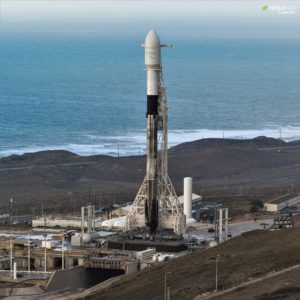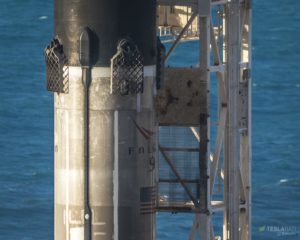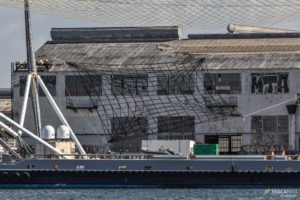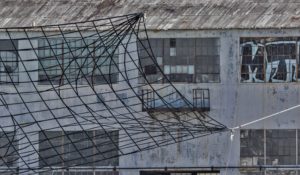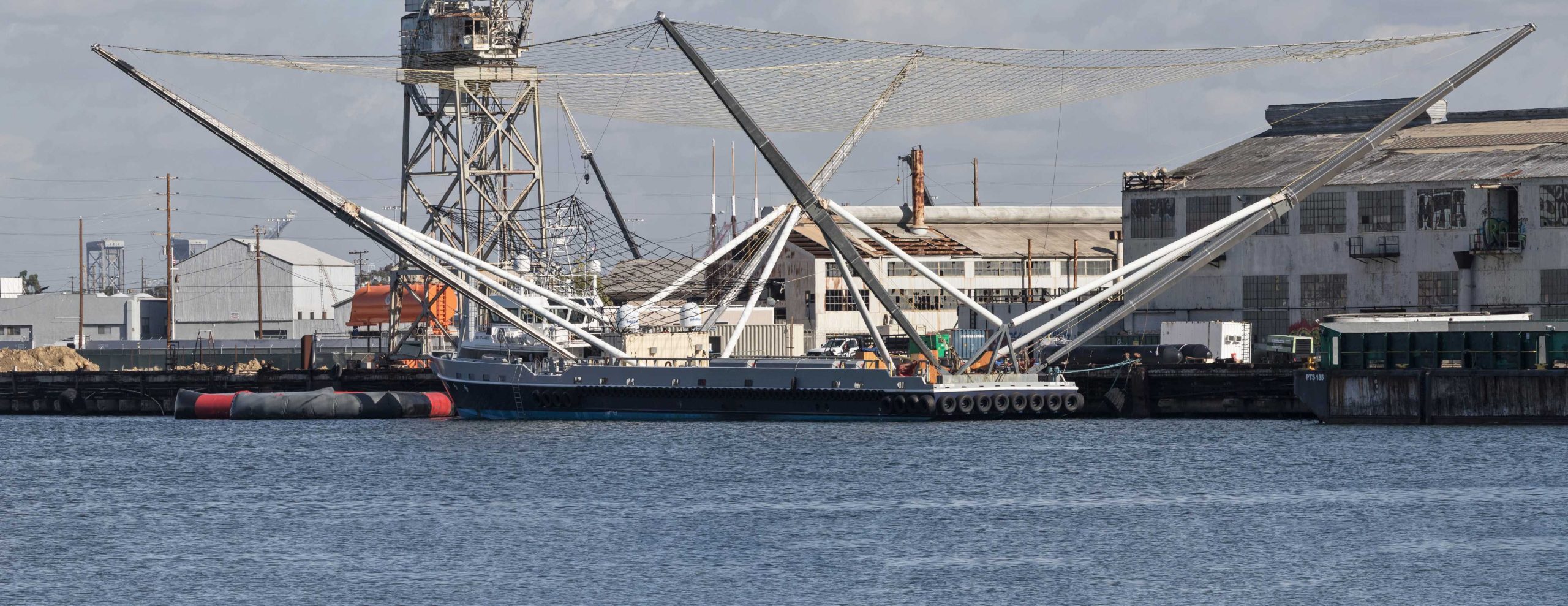
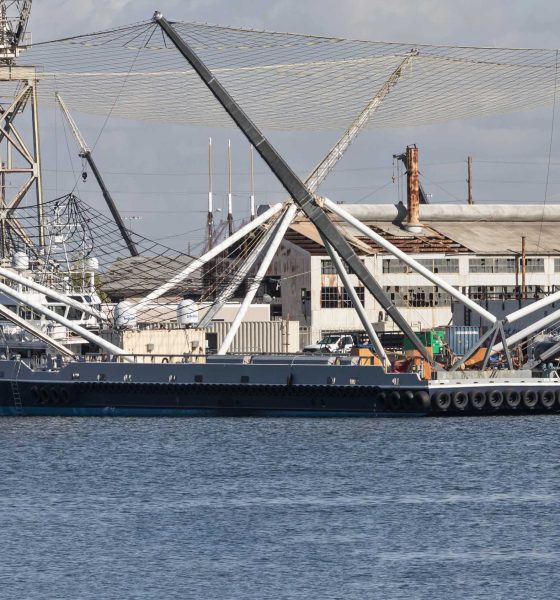
News
SpaceX fairing catcher Mr. Steven to attempt first Falcon fairing catch in months
Currently stationkeeping in the Pacific Ocean 220 miles (350 km) south of SpaceX’s Vandenberg launch pad, it’s starting to look like SpaceX fairing catcher Mr. Steven will soon attempt its first operational Falcon 9 fairing recovery in more than four months.
On the tail of the SpaceX’s fourth or fifth controlled fairing drop test, a series of tests that coincided with Mr. Steven attempting no recovery during the last West Coast launch, it’s possible that SpaceX engineers now believe the company is ready to successfully catch a fairing after an actual Falcon 9 launch. If so, the twice-flown Falcon 9’s third launch – with Spaceflight’s SSO-A satellite rideshare mission in tow – is the best chance yet for SpaceX to take its last critical step towards fairing reusability.
Good News and Bad News! Firstly, launch is pushed back a day till the 3rd. The good news is that Mr Steven's destination is set to SSO-A and might make a catch attempt! pic.twitter.com/3FNvifyRPX
— Gav Cornwell (@SpaceOffshore) December 2, 2018
Over the last four months, Mr. Steven’s crew of SpaceX and GO engineers and technicians have gradually introduced significant modifications to the vessel’s fairing recovery hardware, including major changes to the net’s motorized rigging, the installation of a curious lone arm on his bow, and – most recently – an odd mini-net that appears to be able to move around the gap between Mr. Steven’s main net and deck.
Aside from extensive (albeit subtle) hardware modifications, SpaceX workers conducted no less than four dedicated fairing drop tests, in which a helicopter would lift a specially-modified Falcon fairing half, releasing it around 10,000 feet so that it could deploy its parafoil and glide towards attempted soft landings in Mr. Steven’s net. While it’s almost impossible to know without official confirmation whether any drop test actually occurred, the fairing half involved clearly survived each trip out to sea and is currently stationed out of the way at SpaceX’s Berth 240 facilities.
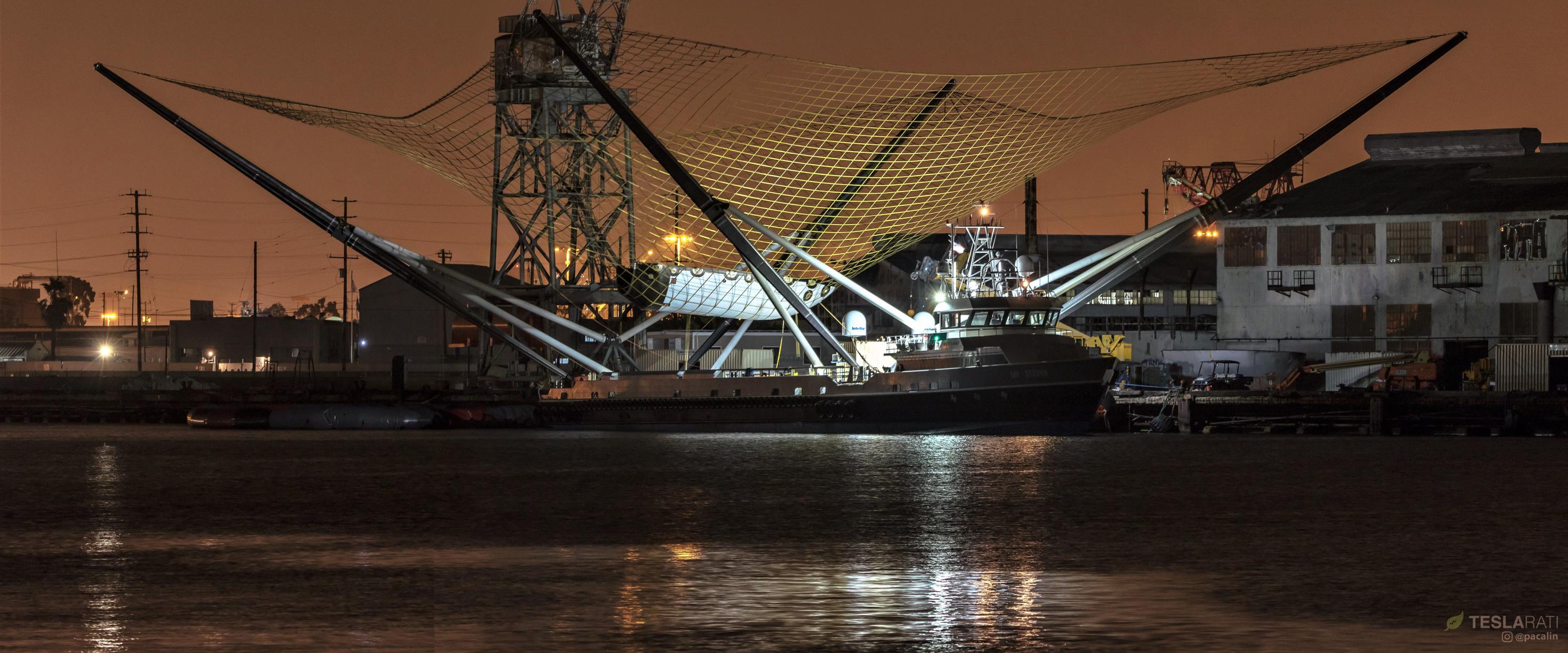
At one point, the recognizable test-specific fairing half did return to port in Mr. Steven’s net and remained there overnight, perhaps indicating that SpaceX saw some success with its experimental drop-and-catch tests. A step further, while it’s fairly easy to literally discern the changes made to Mr. Steven over the last several months, it’s impossible to know just how much the fairing’s own guidance and navigation computers (GNC) and aerodynamic control surfaces (a steerable parafoil) factored into several failed recovery attempts after launches.
More likely than not, Mr. Steven is no more responsible for ensuring fairings are caught than SpaceX’s drone ships are for Falcon 9 booster landings – the most they can typically do is be in the right spot at the right time, although Mr. Steven does admittedly have a bit more flexibility to adjust his net’s position at the last second. Given that SpaceX intentionally avoided a fairing recovery attempt during October 7’s West Coast Falcon 9 launch, choosing instead to travel to the vicinity of Catalina Island for controlled experiments, it seems improbable that SpaceX would attempt another post-launch fairing recovery unless if the program’s engineers hadn’t gained some level of additional confidence.
- A very sooty B1046 is – fingers crossed – at long last ready for its third flight after almost three weeks of delays. (Pauline Acalin)
- Soot, o’ glorious soot. (Pauline Acalin)
- Mr. Steven’s main net has sprouting a forest of additional rigging over the last month or two. (Pauline Acalin)
- Main net, meet bby net. (Pauline Acalin)
- What dat net do?
As such, the launch of SSO-A – already a milestone by thanks to its twice-flown Falcon 9 booster – may also be SpaceX’s best chance yet at successfully catching a Falcon 9 payload fairing in Mr. Steven’s net. Questions remain, of course. What does his cabled unicorn horn accomplish? Why the recent installation of a tiny secondary net? What exactly has Mr. Steven been up to lately in the Pacific Ocean? Who knows, but make sure to watch SpaceX’s launch attempt – NET 10:32 am PST (17:32 UTC) December 3rd – live tomorrow.

News
Tesla FSD (Supervised) v14.2.2 starts rolling out
The update focuses on smoother real-world performance, better obstacle awareness, and precise end-of-trip routing, among other improvements.

Tesla has started rolling out Full Self-Driving (Supervised) v14.2.2, bringing further refinements to its most advanced driver-assist system. The new FSD update focuses on smoother real-world performance, better obstacle awareness, and precise end-of-trip routing, among other improvements.
Key FSD v14.2.2 improvements
As noted by Not a Tesla App, FSD v14.2.2 upgrades the vision encoder neural network with higher resolution features, enhancing detection of emergency vehicles, road obstacles, and human gestures. New Arrival Options let users select preferred drop-off styles, such as Parking Lot, Street, Driveway, Parking Garage, or Curbside, with the navigation pin automatically adjusting to the user’s ideal spot for precision.
Other additions include pulling over for emergency vehicles, real-time vision-based detours for blocked roads, improved gate and debris handling, and extreme Speed Profiles for customized driving styles. Reliability gains cover fault recovery, residue alerts on the windshield, and automatic narrow-field camera washing for new 2026 Model Y units.
FSD v14.2.2 also boosts unprotected turns, lane changes, cut-ins, and school bus scenarios, among other things. Tesla also noted that users’ FSD statistics will be saved under Controls > Autopilot, which should help drivers easily view how much they are using FSD in their daily drives.
Key FSD v14.2.2 release notes
Full Self-Driving (Supervised) v14.2.2 includes:
- Upgraded the neural network vision encoder, leveraging higher resolution features to further improve scenarios like handling emergency vehicles, obstacles on the road, and human gestures.
- Added Arrival Options for you to select where FSD should park: in a Parking Lot, on the Street, in a Driveway, in a Parking Garage, or at the Curbside.
- Added handling to pull over or yield for emergency vehicles (e.g. police cars, fire trucks, ambulances).
- Added navigation and routing into the vision-based neural network for real-time handling of blocked roads and detours.
- Added additional Speed Profile to further customize driving style preference.
- Improved handling for static and dynamic gates.
- Improved offsetting for road debris (e.g. tires, tree branches, boxes).
- Improve handling of several scenarios, including unprotected turns, lane changes, vehicle cut-ins, and school buses.
- Improved FSD’s ability to manage system faults and recover smoothly from degraded operation for enhanced reliability.
- Added alerting for residue build-up on interior windshield that may impact front camera visibility. If affected, visit Service for cleaning!
- Added automatic narrow field washing to provide rapid and efficient front camera self-cleaning, and optimize aerodynamics wash at higher vehicle speed.
- Camera visibility can lead to increased attention monitoring sensitivity.
Upcoming Improvements:
- Overall smoothness and sentience.
- Parking spot selection and parking quality.
News
Tesla is not sparing any expense in ensuring the Cybercab is safe
Images shared by the longtime watcher showed 16 Cybercab prototypes parked near Giga Texas’ dedicated crash test facility.

The Tesla Cybercab could very well be the safest taxi on the road when it is released and deployed for public use. This was, at least, hinted at by the intensive safety tests that Tesla seems to be putting the autonomous two-seater through at its Giga Texas crash test facility.
Intensive crash tests
As per recent images from longtime Giga Texas watcher and drone operator Joe Tegtmeyer, Tesla seems to be very busy crash testing Cybercab units. Images shared by the longtime watcher showed 16 Cybercab prototypes parked near Giga Texas’ dedicated crash test facility just before the holidays.
Tegtmeyer’s aerial photos showed the prototypes clustered outside the factory’s testing building. Some uncovered Cybercabs showed notable damage and one even had its airbags engaged. With Cybercab production expected to start in about 130 days, it appears that Tesla is very busy ensuring that its autonomous two-seater ends up becoming the safest taxi on public roads.
Prioritizing safety
With no human driver controls, the Cybercab demands exceptional active and passive safety systems to protect occupants in any scenario. Considering Tesla’s reputation, it is then understandable that the company seems to be sparing no expense in ensuring that the Cybercab is as safe as possible.
Tesla’s focus on safety was recently highlighted when the Cybertruck achieved a Top Safety Pick+ rating from the Insurance Institute for Highway Safety (IIHS). This was a notable victory for the Cybertruck as critics have long claimed that the vehicle will be one of, if not the, most unsafe truck on the road due to its appearance. The vehicle’s Top Safety Pick+ rating, if any, simply proved that Tesla never neglects to make its cars as safe as possible, and that definitely includes the Cybercab.
Elon Musk
Tesla’s Elon Musk gives timeframe for FSD’s release in UAE
Provided that Musk’s timeframe proves accurate, FSD would be able to start saturating the Middle East, starting with the UAE, next year.

Tesla CEO Elon Musk stated on Monday that Full Self-Driving (Supervised) could launch in the United Arab Emirates (UAE) as soon as January 2026.
Provided that Musk’s timeframe proves accurate, FSD would be able to start saturating the Middle East, starting with the UAE, next year.
Musk’s estimate
In a post on X, UAE-based political analyst Ahmed Sharif Al Amiri asked Musk when FSD would arrive in the country, quoting an earlier post where the CEO encouraged users to try out FSD for themselves. Musk responded directly to the analyst’s inquiry.
“Hopefully, next month,” Musk wrote. The exchange attracted a lot of attention, with numerous X users sharing their excitement at the idea of FSD being brought to a new country. FSD (Supervised), after all, would likely allow hands-off highway driving, urban navigation, and parking under driver oversight in traffic-heavy cities such as Dubai and Abu Dhabi.
Musk’s comments about FSD’s arrival in the UAE were posted following his visit to the Middle Eastern country. Over the weekend, images were shared online of Musk meeting with UAE Defense Minister, Deputy Prime Minister, and Dubai Crown Prince HH Sheikh Hamdan bin Mohammed. Musk also posted a supportive message about the country, posting “UAE rocks!” on X.
FSD recognition
FSD has been getting quite a lot of support from foreign media outlets. FSD (Supervised) earned high marks from Germany’s largest car magazine, Auto Bild, during a test in Berlin’s challenging urban environment. The demonstration highlighted the system’s ability to handle dense traffic, construction sites, pedestrian crossings, and narrow streets with smooth, confident decision-making.
Journalist Robin Hornig was particularly struck by FSD’s superior perception and tireless attention, stating: “Tesla FSD Supervised sees more than I do. It doesn’t get distracted and never gets tired. I like to think I’m a good driver, but I can’t match this system’s all-around vision. It’s at its best when both work together: my experience and the Tesla’s constant attention.” Only one intervention was needed when the system misread a route, showcasing its maturity while relying on vision-only sensors and over-the-air learning.
